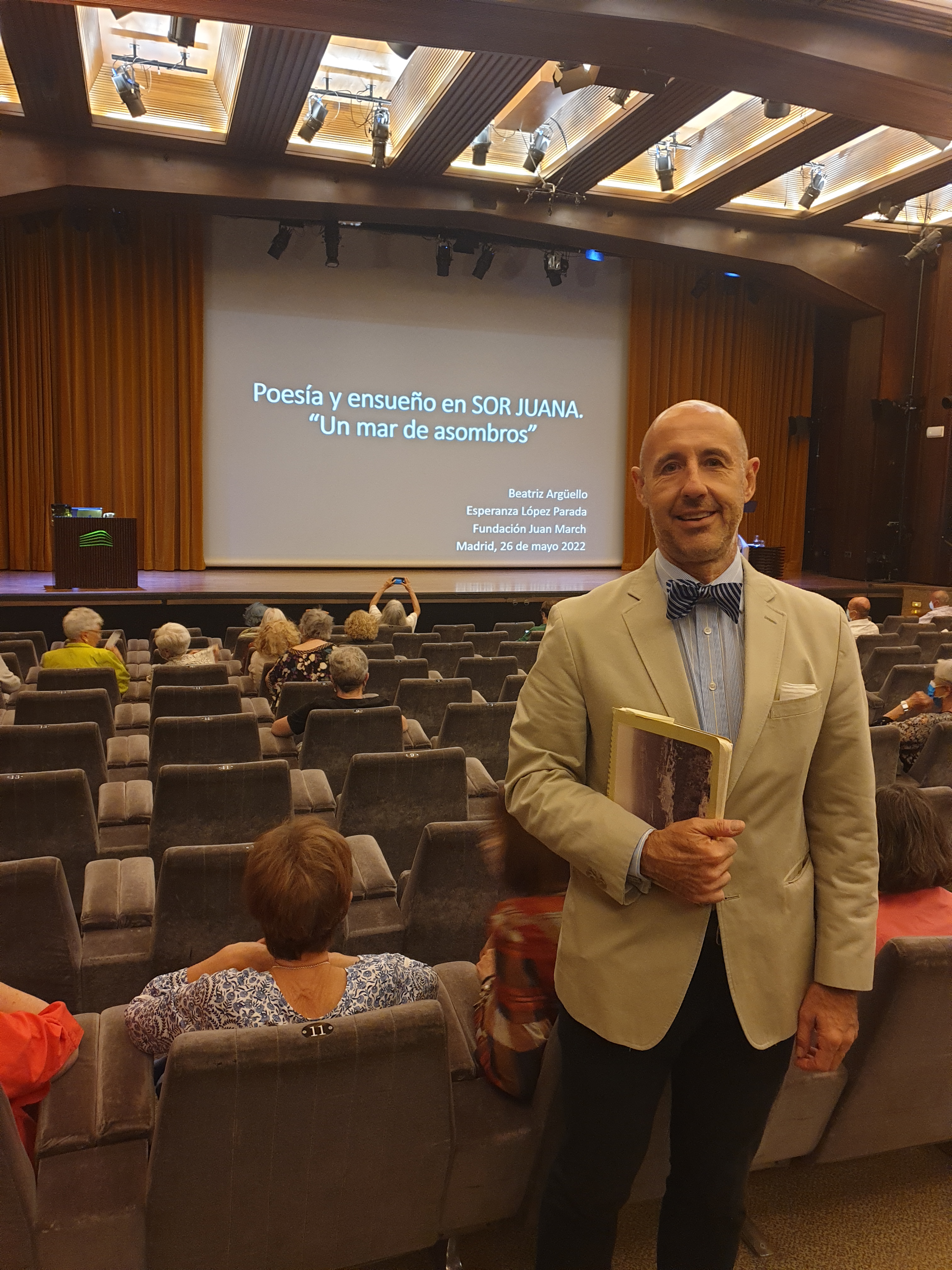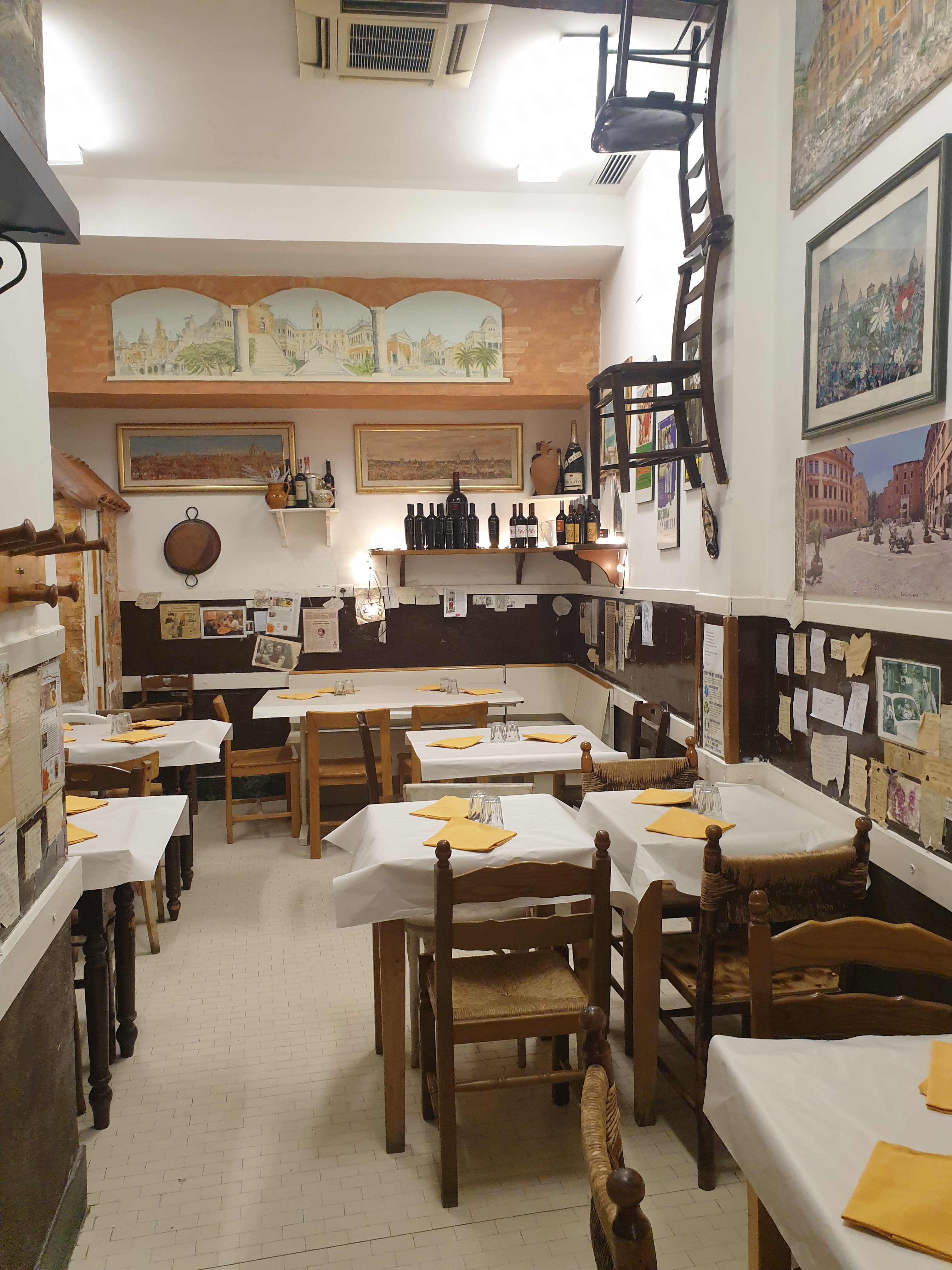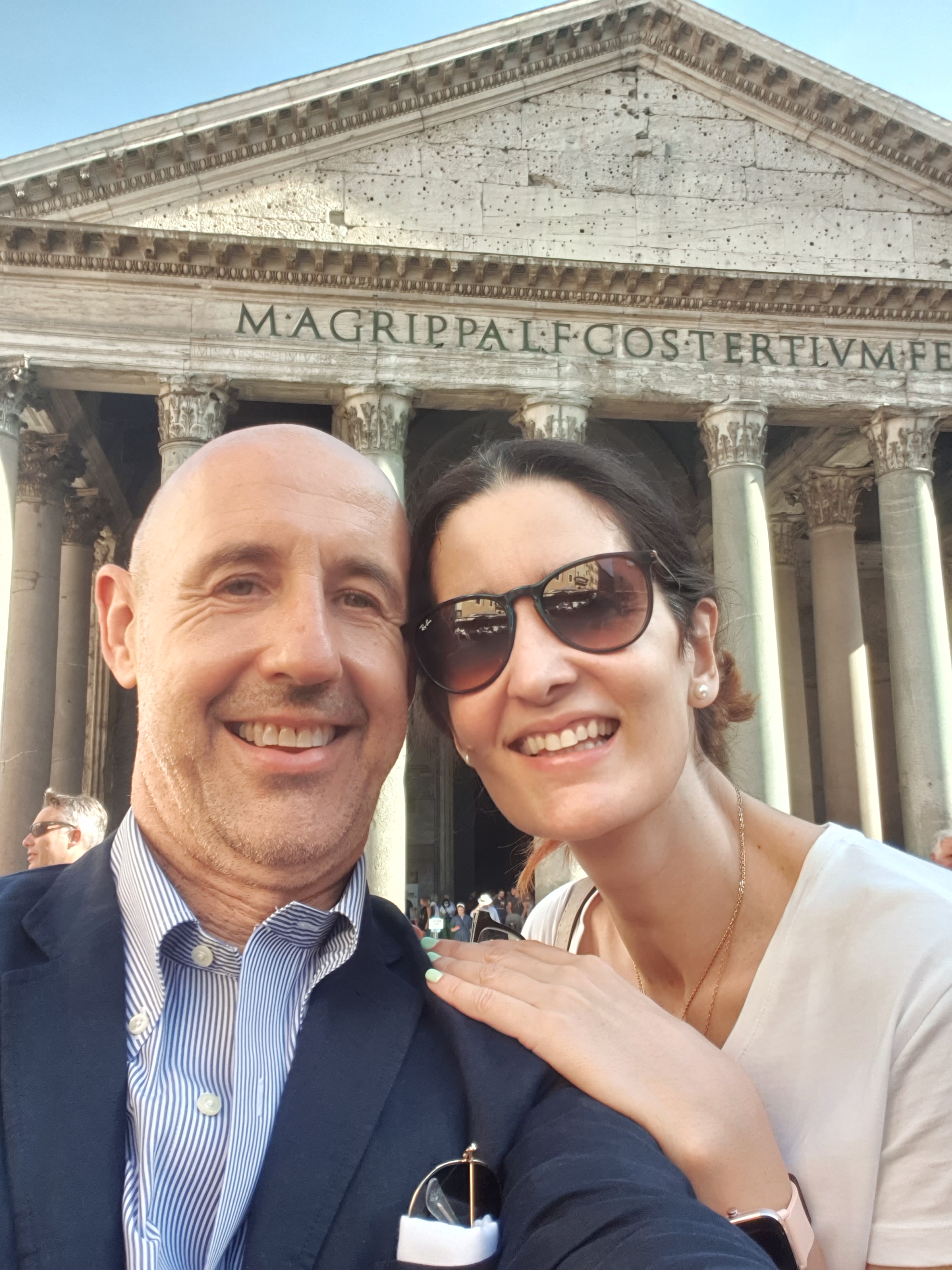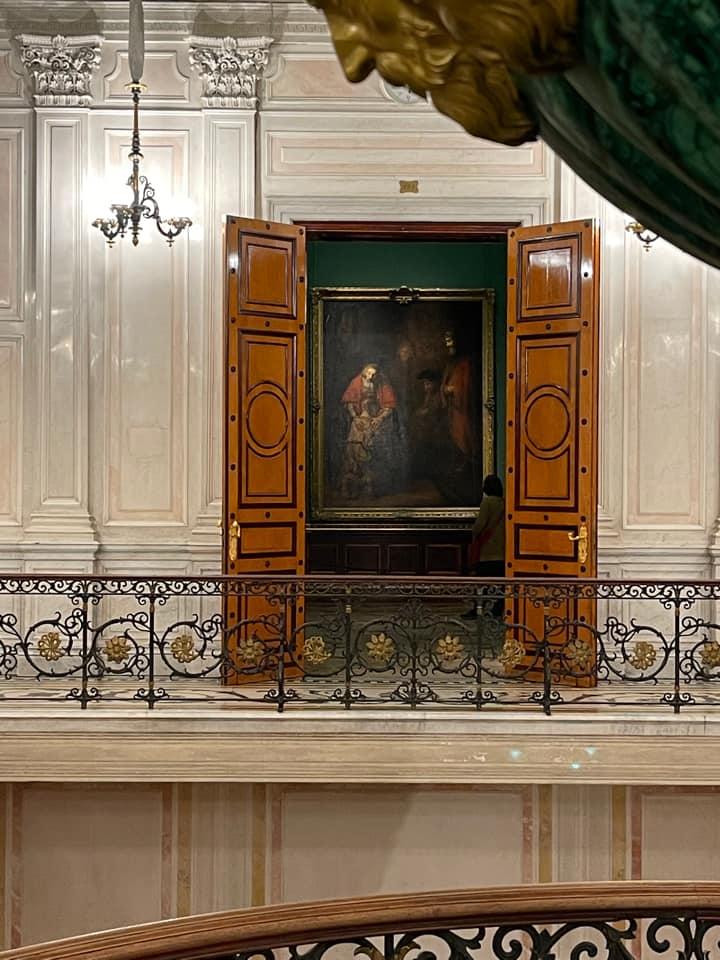
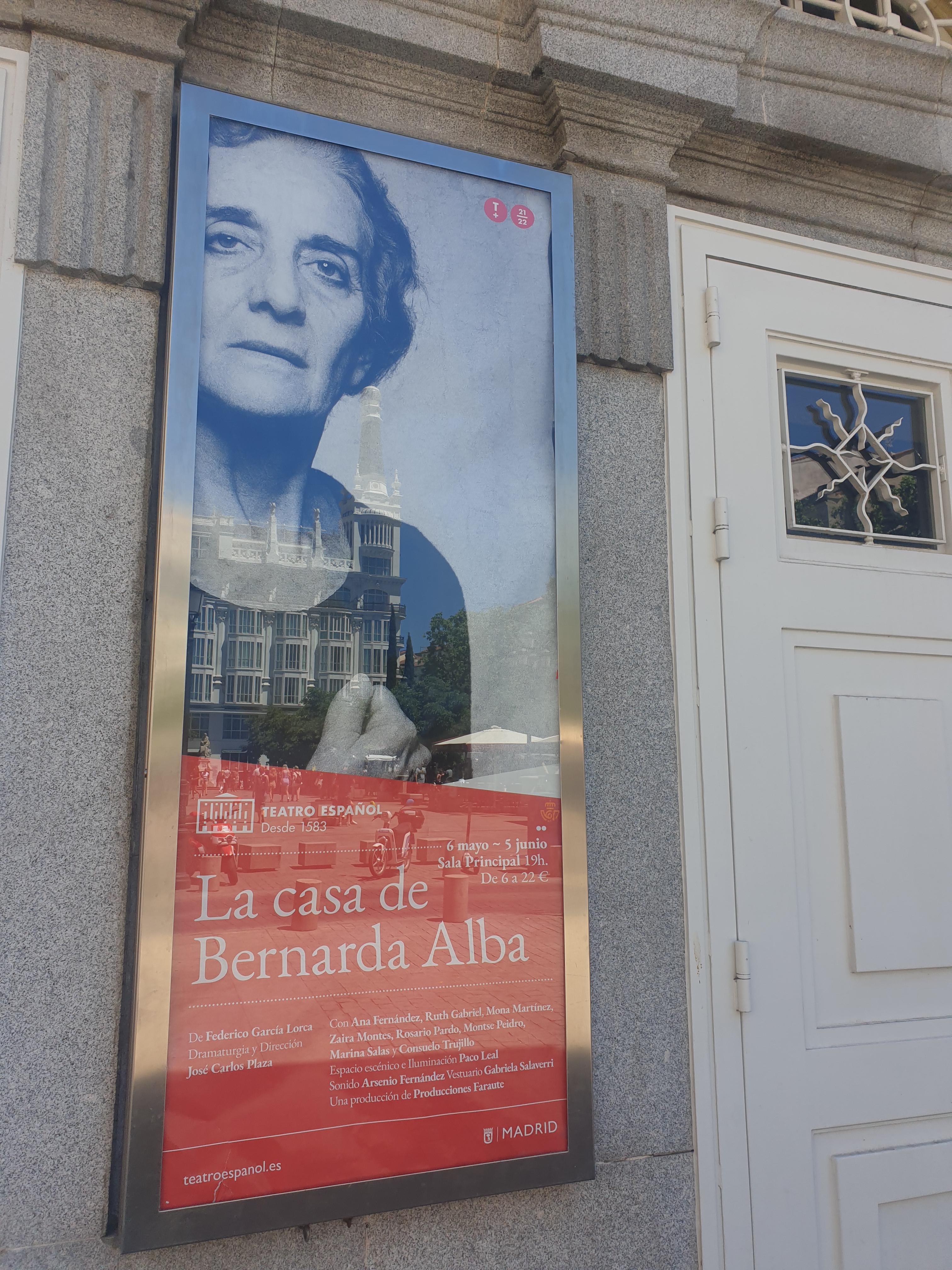



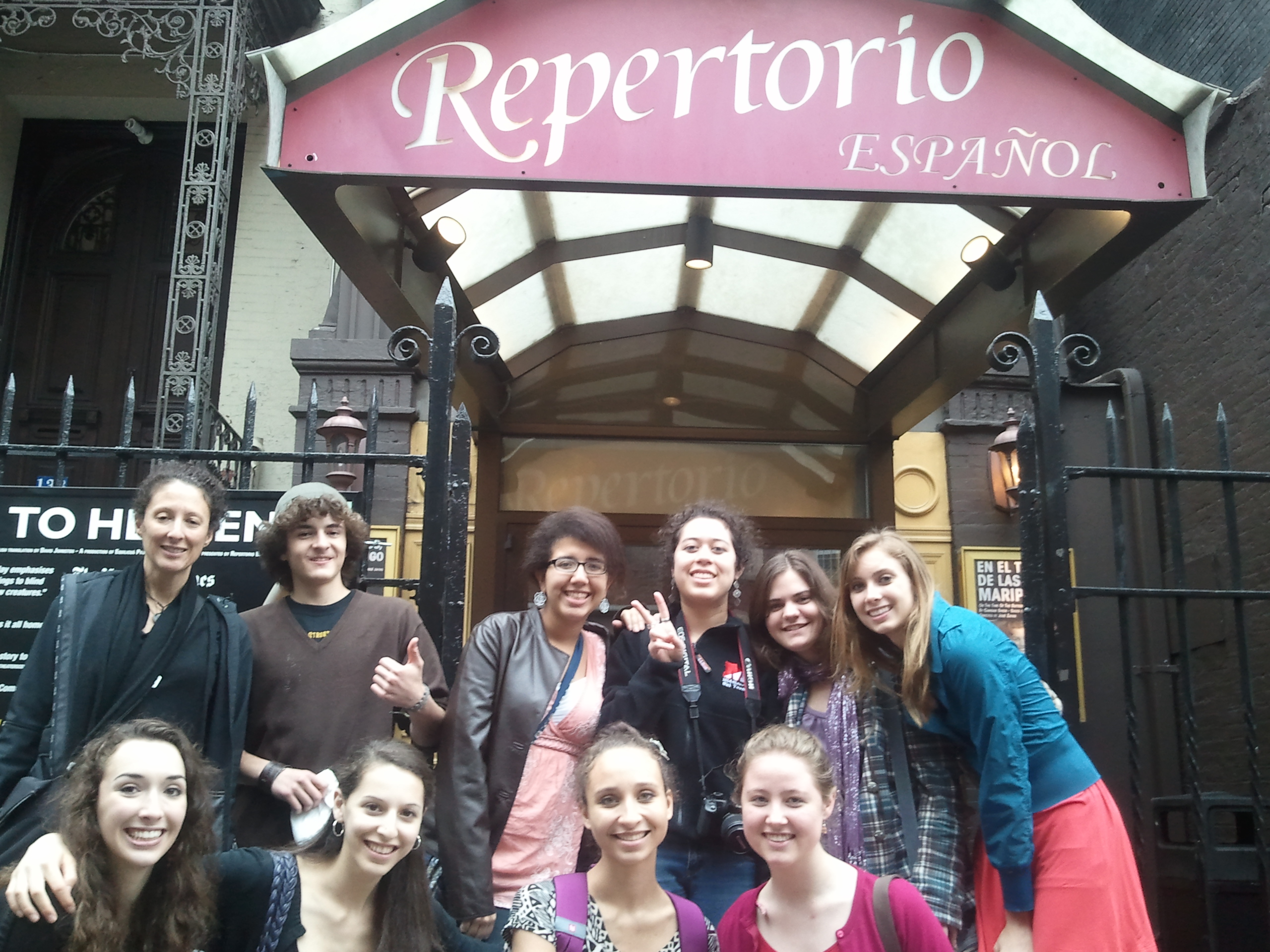
Federico García Lorca is Spain’s greatest 20th C playwright (his poetry is also right up there). He is arguably one of the best in his business, period.
La casa de Bernarda Alba is the play I have read and seen the most. Teaching in Boston, every year I would drive my advanced students to New York city to see Repertorio Español‘s production. I have even seen a version done by illiterate Roma women, I also saw a bilingual production by UNC students while I taught and studied there.
The Teatro Español is the oldest running theatre in Europe (since 1583, 439 years ago!), so imagine my surprise when I found out that I was going to be in Madrid during a run of La Casa de Bernarda Alba! I wasted no time in buying tickets and inviting my girlfriend and my eldest niece.
The theatre is right downtown, in the middle of the aptly named Letras neighborhood (Barrio de las letras) because Cervantes and Lope de Vega and others lived there. My niece and I rode a rental scooter there and we met Celia at the theatre.
The presentation was top notch, possibly the best I’ve seen. But, like other times, the director took some liberties with the text, for example cutting out the maid and beggar woman characters, or cutting out dialogue, which I find insulting to the text and the author, grrr. The setting was very minimalist, basically the patio of Bernarda’s house.
After the play we went to dinner to my grandad’s favorite bar, the Viva Madrid, around the corner from the theatre.
It was a great evening, the show was amazing, and we all had a great time!
What is your favorite play? Tell us in the comments section.


